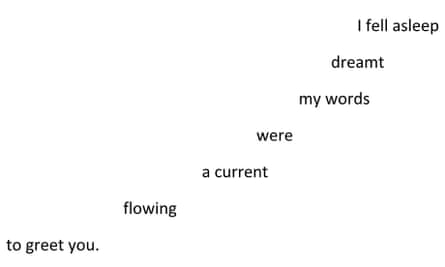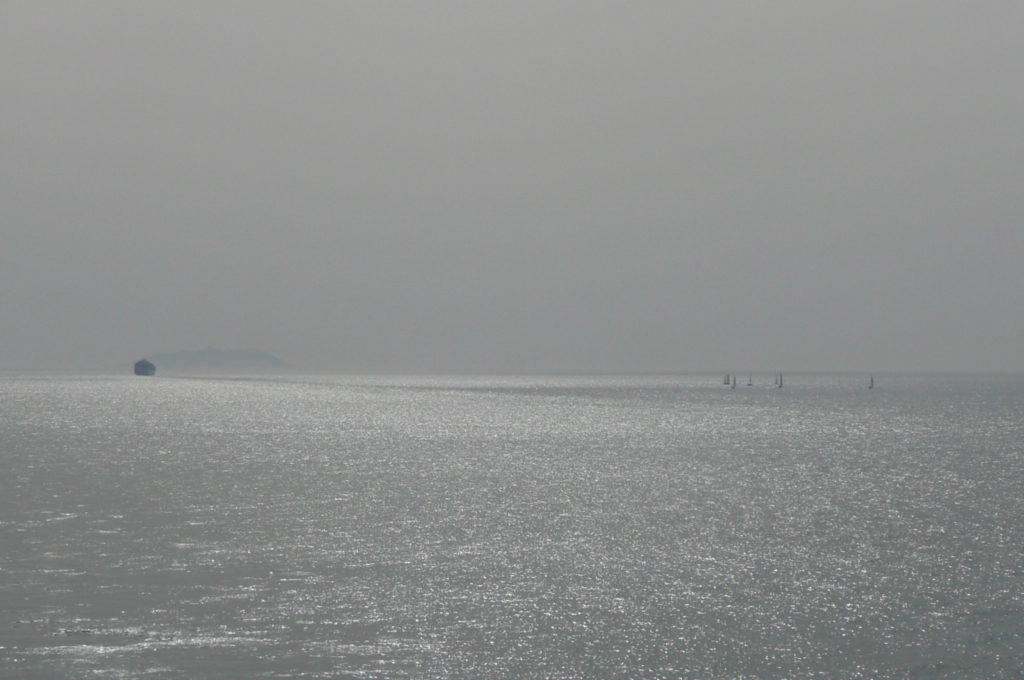From The Guardian
We hear the call of the sea in poems from Coleridge and Eliot to Kathy Jetn̄il-Kijiner, but those words also sound a warning – if only we would listen
David Farrier, Mon 26 Dec 2022
TS Eliot wrote The Dry Salvages as second world war bombs fell on London. The poem imagines humanity adrift in a leaky boat, the sea “all about us”. But poetry, like the sea, is never still. “Where is there an end to the drifting wreckage,” the poem asks. The answer: “There is no end, but addition” reads differently in 2022 than in 1941, as 12m tonnes of plastic are added to the oceans each year.
Reading is tidal, and each tide brings with it new associations. It is difficult now to read John Masefield’s Sea-Fever without thinking of bleaching coral, or Samuel Taylor Coleridge’s The Rime of the Ancient Mariner without picturing Chris Jordan’s photographs of dead albatross, their stomachs full of brightly coloured plastic. “‘Hope’ is the thing with feathers,” but avian flu is decimating seabird populations.
Poetry, both old and new, not only reveals the oceans’ uncanny beauty, it also frames the monstrous dilemmas of rising seas, pollution, and declining biodiversity.
Marshallese poet Kathy Jetn̄il-Kijiner’s collection Iep Jaltok confronts the existential challenge of sea-level rise for island nations. In 2 Degrees, her infant daughter’s fever prompts a bitter reflection on the arrogance of fossil fuel-consuming nations: the difference between 1.5C and 2C “Seems small … just crumbs / like the Marshall Islands / must look / on a map”. Jetn̄il-Kijiner was the Marshall Islands’ climate envoy at Cop27, and criticised the failure to phase out fossil fuels even as developing nations celebrated the loss and damage fund.
“The call of the running tide / Is a wild call and a clear call that may not be denied;” writes Masefield in Sea-Fever. Likewise, the Marshall Islands’ claim to a liveable future in the face of rapidly rising tides is – or ought to be – irresistible.
There is hope in these poems, but it’s something made in the face of grim predictions. Two poems, arranged to resemble baskets, bookend Jetn̄il-Kijiner’s collection, the words like tiny atolls in the white sea of the page:

The loss of indigenous cultures washes away whole worlds. Among the Inupiaq of Alaska, seals, whales and seabirds are people. Even “Oil is a People,” writes Inupiaq poet dg nanouk okpik. Throughout her collection Corpse Whale, okpik uses a split pronoun, “she/I”, to express this sense of shared personhood. “Will they crawl around her / me, sink their eyeteeth in the sea,” she asks in If Oil is Drilled in Bristol Bay.
“Where they want / to claim the sea for roads,” she writes in No Fishing on the Point, “She’s/I’ve watched the currents, / […] / which bring […] feasts, and famine.”
For much of human history, the sea’s vastness has suggested eternity, a metaphysical space into which we have poured both our dreams and our waste. There are at least 415 marine dead zones around the world, areas so polluted by nitrogen and phosphorus that the water is free of oxygen. Like the “the rotting sea” of Coleridge’s poem, where “a thousand thousand slimy things / Lived on;” nothing can survive in a dead zone, except jellyfish and bacteria. “Globe globe globe globe,” pulses the jellyfish in Les Murray’s poem, Jellyfish, intimating both its soft-bodied shape and the prospect of a future ocean dominated by anoxic life.
But poetry isn’t science; not bound simply to report on the state of things, poetry is free to imagine what could be. Brenda Shaughnessy’s The Octopus Museum presents a future Earth ruled by cephalopods, creatures whose intelligence is proof that, as the philosopher Peter Godfrey-Smith puts it, “the mind evolved in the sea”. In Caleb Parkin’s day-glo collection This Fruiting Body, chromatophoric creatures rave (“your skin / sings eight-thousand synthesised octopoid loops”) and Ecco the Dolphin, the hero of Sega’s 1990s video game classic, “roves immaculate 16-bit oceans”.
Parkin’s poems celebrate a fluid nature uncontained by binary thinking. A carrier bag floating in the sea becomes “a lazy misremembering / of plankton masses”. The synthetic and the organic flow into one another. That fluidity can be deadly: turtles eat plastic bags because they resemble “the ghost of a jellyfish”. But Parkin’s carrier bag wants no more than “to unpack itself […] / to become once again bustling plankton masses.” We know some bacteria colonise marine plastic, and have even evolved to metabolise it. The force underpinning all life, Parkin reminds us, is desire.
Desire is also the main current of The European Eel, Steve Ely’s lush recreation of the incredible transatlantic migration eels undertake to their spawning grounds in the Sargasso Sea. Little is known about their ocean-going lives, but in Ely’s telling it becomes a testimony to life’s irrepressibility. A female eel will gradually consume her own body to fuel the journey, “reducing herself to the seed of her species’ future”. It culminates in an ecstatic account of eel sex, coiling in billowing clouds of golden milt and ova, “sparks from the cornucopian flame / of Archaea’s unkillable, dark pleroma”.
Life thrills in the shallows as well as the deep. The glory of the foreshore is celebrated in Of Sea, Elizabeth-Jane Burnett’s bestiary of the intertidal zone. Mud shrimp drifting with the tide float in “silk light”; ragworm, burrowing in estuarine mud, shimmer “in all the love of being”.
We might say a poem is a bit like a boat, a vessel borne aloft by rhythms that surge or eddy. It is also like the sea itself, with its deep places and ever-receding horizon. “The sea has many voices,” observes Eliot in The Dry Salvages. More than anything, the many voices of oceanic poetry declare the vitality of life even in the midst of crisis. “There is a lullaby in all of us,” Burnett writes, “a call of sea”. If only we would listen.
David Farrier is professor of Literature and the Environment at the University of Edinburgh, and the author of Footprints: In Search of Future Fossils

